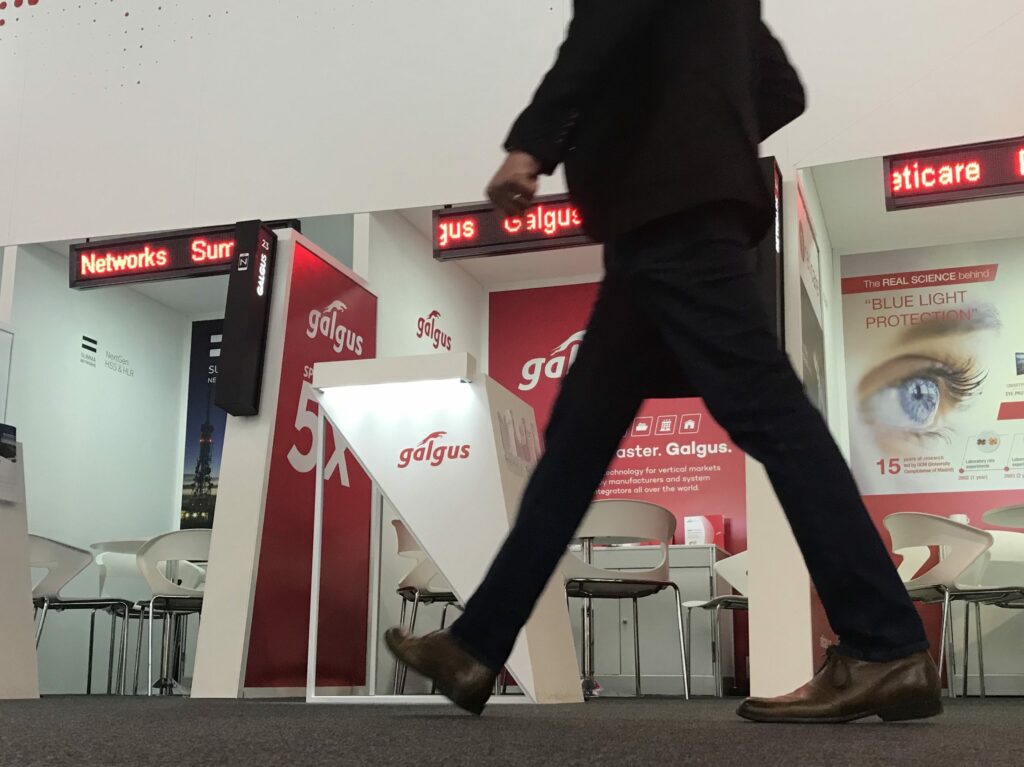For the second year in a row, Galgus was at the Mobile World Congress in Barcelona. Considered to be the biggest and best mobile event in world, the company introduced a brand new feature of its CHT software: Location, Positioning and Tracking (LPT)
From February 26th to March 1st, a new edition of the Mobile World Congress was held in Barcelona. This is an annual congress around the world of mobile communication and is considered the most important in the world of its industry. 107,000 visitors from 208 countries, 2,300 companies were present, including Galgus, which was one of the 50 companies that had its own space within the Spanish Pavilion in the trade show.
During four days of event, Galgus held about 90 business meetings at its booth with companies and professionals from more than thirty countries. There, Galgus was able not just to explain its technology, which manages to increase the speed of a WiFi network by five times, reducing the level of radiation by 84% and reducing the electricity consumption by 60%, but to demo live its new feature: Location Positioning and Tracking (LPT)
The main advantages of Galgus’ location solution over other commercial systems for indoor positioning are:
- The location is based exclusively on the existing WiFi infrastructure, without the expensive need to deploy additional APs or routers, beacons, and additional WiFi or non-WiFi devices (Bluetooth, Zigbee, LiFi, etc).
- Their methods are prepared to take advantage of the idle times of the devices, so they do not have a negative impact on the performance of the network. The QoS for the clients is not affected, in terms of goodput, number of clients connected, number of retransmissions, etc. The network administrators are still able to locate their clients while they are enjoying their multimedia content.
- The location process may be done without disturbing the clients, requesting them to install odd applications, or modifying their terminals. Moreover, the users do not notice that they are being located, as long as the network administrator guarantee their privacy and the confidentiality of their communications.
- The system does not rely on fingerprinting techniques, so there is no need for calibration or expensive survey work to measure the radio characteristics of the map. The clients just start using their devices and they are located.
- The location algorithm is based on algebraic techniques which combine information from the different data between STAs and APs. This property enables the indoor positioning system to exploit the most reliable information for each propagation environment.
- The location technique is fully scalable, so it adapts automatically to the number of access points. In fact, the accuracy of the position estimation improves as the number of deployed APs and wireless routers grow.








